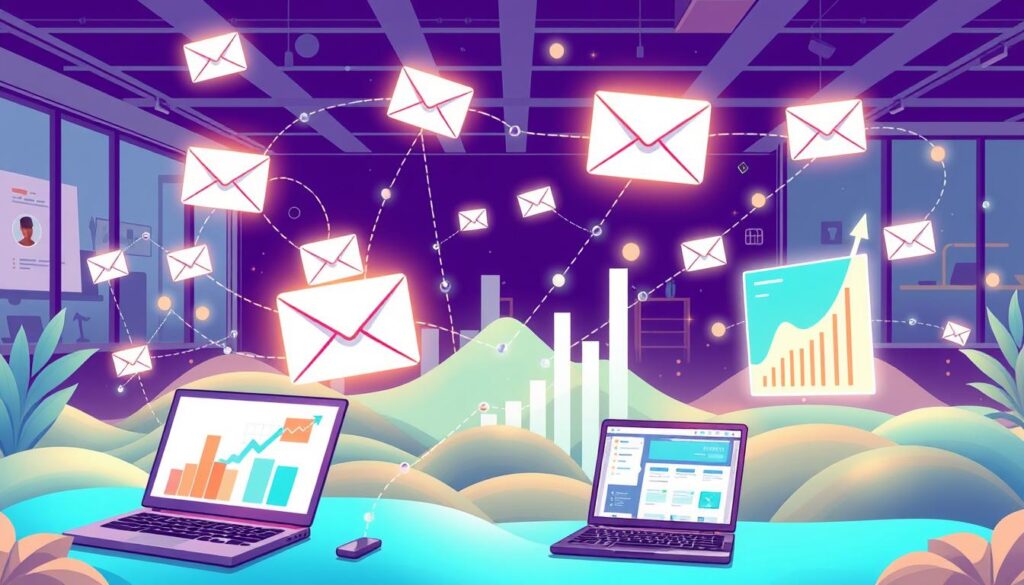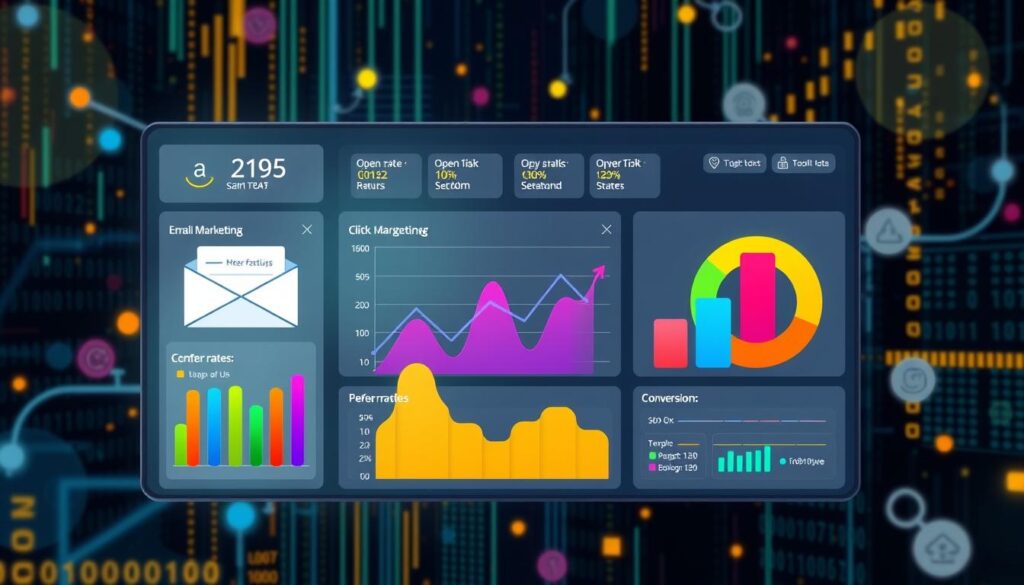Did you know that every dollar spent on email marketing can generate an astonishing $36 to $44 in return? This staggering statistic underscores the immense potential of email marketing as a powerful tool for boosting your sales. By mastering the art of email campaigns, you can directly engage with your audience, creating personalized messages that lead to higher conversion rates. Email list building and effective email automation can further play critical roles in streamlining your sales processes, allowing you to nurture leads and keep your brand top-of-mind. If you leverage targeted content and clear calls-to-action, you’re setting your business up for sustained sales growth. Let’s dive into why email marketing matters and how you can harness its full potential. Furthermore, partnering with the top automotive email marketing companies can amplify your results by providing industry-specific strategies tailored to your unique audience. These experts can help craft compelling campaigns, optimize delivery times, and analyze performance metrics to ensure maximum impact. By combining their expertise with your brand’s voice, you can unlock unparalleled opportunities for growth and customer retention.
Key Takeaways
- Email marketing boasts a high ROI, making it an invaluable tool for businesses.
- Personalization helps in forging deeper connections with your audience.
- Monitoring open and click-through rates is essential for measuring email success.
- Segmentation and A/B testing are effective strategies to optimize your campaigns.
- Utilizing email automation can significantly save time and enhance your marketing efforts.
Understanding the Importance of Email Marketing
Email marketing holds an essential position in the modern business landscape. This channel uniquely combines cost-effectiveness and high engagement potential, making it a favorite among marketers. As you navigate through the digital world, embracing email marketing can lead to unparalleled opportunities for customer connection and brand growth.
Why Email Marketing Matters for Your Business
Utilizing email marketing offers distinct advantages. Consumers appreciate receiving promotional emails, with 86% expressing a desire for monthly communications, and 15% even preferring daily messages. This statistic underlines the demand for direct engagement with customers. Email marketing reaches broad audiences effectively, transcending generational divides.
With the cost of acquiring a new customer being five times more than retaining an existing one, businesses should leverage email to nurture customer relationships. The greater visibility of emails compared to social media updates ensures that your messages will likely be seen. Additionally, implementing various email campaigns, such as newsletters and personalized offers, can keep your audience engaged and drive sales.
Key Statistics That Illustrate Email Effectiveness
Several compelling statistics highlight the email effectiveness in driving business success. For instance, email marketing boasts an impressive ROI ranging from 3,600% to 4,500%. This return signifies a lucrative investment when you consider that for every $1 spent, an average of $38 can be earned.
| Metric | Value |
|---|---|
| Average Open Rate | 22.86% |
| Average Click-Through Rate | 3.71% |
| Purchase Conversion Rate from Email | 24% |
| Purchase Conversion Rate from Search Engines | 2.49% |
| Purchase Conversion Rate from Social Media | 0.59% |
With email engagement being higher than interactions seen on social media, it is clear that emails operate as a potent tool in converting leads into customers. Utilizing customer data for hyper-personalization can further enhance relevance and engagement, leading to effective campaigns tailored to specific audiences.

Building an Email List That Converts
Successful email list building is crucial for engaging potential customers and enhancing your marketing impact. When you focus on strategies that propel subscriber base growth, you lay the foundation for future marketing successes. Below are techniques to effectively grow your email list and leverage email segmentation for better performance.
Strategies for Growing Your Subscriber Base
Engaging visitors on your website begins with compelling offers. Consider these strategies:
- Create irresistible opt-in offers such as discounts, free shipping, or exclusive content that persuade visitors to provide their email addresses.
- Utilize strategic pop-ups; studies indicate that implementing them can lead to significant results, such as generating 2,689 leads in just two weeks.
- Incorporate referral programs, which allowed one fitness company to thrive by rewarding users with $20 for each successful referral.
- Encourage opt-ins during the checkout process to capture potential customers right when they are engaged.
Importance of Segmentation for Targeted Campaigns
Email segmentation ensures that your messages resonate with specific audience subsets based on their behaviors and demographics. Personalized calls to action can be especially effective; research shows they generate a 42% higher view-to-submission rate than their generic counterparts. Segmenting your lists aids in crafting targeted campaigns that resonate, ultimately improving engagement.
Tools to Help You Manage Your Email List
Effective email list management tools can streamline your efforts and maintain organized communication. Consider utilizing the following:
| Tool | Features | Usage Benefits |
|---|---|---|
| Mailchimp | Free plan, automation, pop-up forms | 50.8% list growth rate increase with pop-ups |
| Shopify Forms | Email signup forms for ecommerce | Integrates seamlessly with Shopify store |
| Constant Contact | Email automation and list management | Easy to create and manage segmented lists |
Employing these email list management tools simplifies your processes, enabling more focused outreach and enhanced engagement with your audience.

Crafting Compelling Email Content
Creating captivating email content is essential for maximizing engagement and boosting conversions. Understanding how to engage your audience involves carefully crafting subject lines, adhering to email design best practices, and utilizing email personalization techniques. These elements will set the stage for successful email marketing campaigns.
Tips for Writing Attention-Grabbing Subject Lines
Subject lines play a crucial role in email open rates. Keeping them concise is vital; aim for fewer than 50 characters to minimize cutoffs. You can significantly boost engagement by incorporating personal pronouns like “you” or including the recipient’s name, which can lead to up to a 14.68% increase in open rates. Consider the following strategies:
- Utilize clarity and curiosity.
- Create a sense of urgency.
- Focus on benefits rather than just features.
Best Practices for Email Design and Layout
Using effective email design best practices enhances readability and engagement. Prioritize a simple and organized layout that is visually appealing and compatible with mobile devices. Key components to consider include:
- Utilizing images or GIFs to enrich content.
- Ensuring easy navigation with clear calls-to-action (CTAs).
- Segmenting content based on subscriber interests to improve relevance.
Personalization Techniques to Engage Your Audience
Email personalization is a powerful tool for increasing reader engagement. Tailoring your messaging to specific interests and needs can create a deeper connection with recipients. Implement techniques such as:
- Addressing recipients by their first name in the email and subject lines.
- Using a friendly, relatable tone to foster connection.
- Incorporating interactive elements such as quizzes or polls to encourage participation.
By combining these aspects of your email content strategy, you can enhance reader engagement and drive better results for your campaigns. Keep experimenting with different tactics to see what resonates best with your audience.

Analyzing and Optimizing Your Email Campaigns
Effective email marketing demands continuous analysis and optimization. With the right email analytics, you can gain insights into how your campaigns perform. Tracking email campaign metrics such as open rates, click-through rates, and conversion rates provides critical information to refine your strategies for better outcomes.
Metrics to Measure Your Email Success
Measuring the success of your email campaigns hinges on specific metrics. The following KPIs are essential:
- Open Rates: Indicates how many recipients opened your email.
- Click-Through Rates: Reflects how many clicked on links within your email.
- Conversion Rates: Shows how many completed the desired action, such as making a purchase.
- Bounce Rates: Tracks the percentage of undeliverable emails.
- Unsubscribe Rates: Measures how many opted out of your list.
A/B Testing Strategies for Better Performance
A/B testing in email marketing plays a pivotal role in optimizing your campaigns. Limiting variations to four while testing a single variable yields reliable data quickly. For example, testing subject line lengths—under 50 characters versus 50 to 70 characters—can significantly influence open rates. Discounts in the 20-29% range have shown impressive conversion rates across industries. Brands can effectively A/B test various discount types, including:
| Discount Type | Performance Insights |
|---|---|
| Percentage Off | Typically leads to higher engagement than fixed amounts. |
| Dollar Amount Off | Effective for certain customer segments. |
| Free Gifts | May create stronger emotional connections. |
Common Mistakes to Avoid in Email Marketing
Recognizing common email marketing mistakes is vital for improving campaign performance. Here are several pitfalls to watch out for:
- Neglecting to optimize emails for mobile devices can alienate a significant portion of your audience.
- Forgetting about segmentation leads to generic content that doesn’t resonate.
- Failing to analyze email analytics results can leave you in the dark about what works.
- Poor timing of emails may result in lower open and engagement rates.

Staying Compliant with Email Marketing Regulations
In today’s digital landscape, understanding email marketing regulations is crucial for maintaining trust and avoiding legal pitfalls. Compliance with laws such as the CAN-SPAM Act and GDPR not only protects your business but also reassures your subscribers that their personal data is safe. The CAN-SPAM Act, established in 2003, lays out essential requirements, including identifying promotional emails, offering clear unsubscribe options, and keeping accurate sender information. Similarly, GDPR emphasizes obtaining explicit consent from subscribers, particularly those in the European Union, ensuring transparency around their data rights.
Understanding CAN-SPAM and GDPR Requirements
For businesses, CAN-SPAM compliance includes guidelines like using truthful subject lines and including a valid postal address in every email. Brands like Rip Curl exceed these requirements by ensuring instant unsubscribe options that further enhance customer trust. GDPR mandates that you collect personal data only for specific purposes, maintain its accuracy, and be upfront about how it will be used. Compliance with these regulations is not optional; the penalties for violations can be steep, including fines that reach into the millions.
Best Practices for Permission-Based Marketing
Implementing best practices in permission-based marketing is essential for fostering long-term subscriber relationships. Following Freshbooks’ lead, use explicit opt-in methods such as sign-up pop-ups on your website to ensure your email list complies with global anti-spam laws. Moreover, clarity is key—inform your subscribers about how their information will be utilized, just as Sephora does by branding their promotional emails effectively. As more countries enact their own regulations, such as Canada’s Anti-Spam Legislation and the California Consumer Privacy Act, staying compliant with these diverse laws will protect your business and help you build a loyal customer base.
FAQ
What is email marketing and why should I use it?
How can I build an effective email list?
What are the best practices for email content?
How can I analyze the performance of my email campaigns?
What regulations must I comply with in email marketing?
How can I enhance email deliverability?
Erik – Email, SEO, AI Expert Writer Erik is the strategist, the thinker, and the visionary. His role at LeftBrainMarketing is pivotal in integrating SEO with AI-driven content strategies. With an extensive background in email marketing and a profound understanding of search engine algorithms, Erik develops innovative strategies that elevate our client’s online presence. His work ensures that our content is seen, felt, and remembered.










